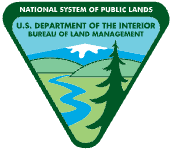The Center for Plant Conservation’s Applied Plant Conservation Course is a free professional development resource that serves to train our current and future botanical workforce in the best practices of rare plant stewardship and conservation.
The Applied Plant Conservation Course, features nine overarching subject modules:
- Module I: Introduction to Rare Plant Conservation – Available Now
- Module II: Ensuring the Conservation of Rare Plant Genetic Diversity – Available Now
- Module III: Where Rare Plants Live: Now and In the Future – Available Now
- Module IV: Assessing Wild Plant Populations – Available Now
- Module V: Rare Plant Reintroductions – Available Now
- Module VI: Collecting Seeds for Conservation Collections in Long-term Seed Banks – Available Now
- Module VII: Conservation of Exceptional Species – Available Now
- Module VIII: Propagation and Horticulture of Rare Plants – Available Now
- Module IX: Tools and Partnerships – Available Now
What Can You Expect From the Applied Plant Conservation Course?
Video Lectures by Leading Experts • Real-World Case Studies • Animated Lessons • Pre- and Post- Course Survey • Quizzes • Personal Reflections Journal
Before you Begin:
- Pre & Post Course Survey – Help us understand how this course is being used and how we can continue to make improvements for future learners. Access the survey here.
- Reflections Journal – Dig deeper and connect what you’re learning to your personal and professional projects. Download the Reflections Journal and use alongside the course. A great tool if you want to present to your team or supervisor about this training. Available as: Google Slides or Microsoft PowerPoint
____________________________
Partial funding for the Applied Plant Conservation Course is generously provided by:

BLM California | Agreement No. L20AC00413
BLM Colorado | Agreement No. L20AC00374
BLM Nevada | Agreement No. L20AC00266
Module I: Applied Plant Conservation Course Introduction
Module I: Why We Conserve Rare Plants
Module I: The Nature of Plant Rarity
Module I: Rare Plant Resources and Conservation Ranks
Module I: Rare Plant Ecology
Module I: Rare Plants on Public Lands
Module II: The Importance of Rare Plant Genetic Diversity
Module II: Measures of Rare Plant Genetic Diversity & Population Structure
Module II: Genetic Issues Related to Maintaining Collections
Module II: Evaluating Genetic Information for Land Management Decisions
Module III: Theory Behind Plant Species Distribution & Ecological Niches
Module III: Characterizing Habitat Suitability for Rare Plants Through Species Distribution Models
Module III: Using Species Distribution Models to Make Conservation Decisions
Module III: Managing Habitat to Benefit Rare Species
Module IV: Conducting Botanical Surveys for Rare Plants
Module IV: Monitoring Design
Module IV: Rare Plant Site Ethics
Module IV: Rare Plant Population Models and Modeling Plant Demography in R
Module IV: Making Management Decisions from Population Models
Module V: Overview and Planning a Reintroduction
Module V: Knowing Species Reproductive Biology
Module V: Genetics of Reintroductions
Module V: Choosing One Source Population or Mixing Sources for the Founding Population
Module V: From Nursery to Field
Module V: Selecting the Suitable Recipient Site and Recipient Site Assessment
Module V: Adaptive Reintroductions – Generate Hypothesis, Test, Evaluate Cycle
Module V: Monitoring and Sharing Information
Module V: Adjusting Monitoring to Species Life History
Module V: Examples of What Can Be Done with Monitoring Data
Module V: Characterizing Successes and Failures in Reintroduction
Module V: Common Reasons for Reintroduction/Mitigation Failure
Module VI: Planning a Seed Collection
Module VI: Seed Collection Day
Module VI: Cleaning Orthodox Seeds & Evaluating Seed Quality
Module VI: Drying Seeds
Module VI: Storing Seeds
Module VI: Germination Trials
Module VI: Small Collections
Module VI: Collecting and Processing Cacti, Agaves, and Yuccas
Module VII: Introduction to Exceptional Species
Module VII: Tissue Culture
Module VII: Cryopreservation
Module VII: Field Gene Banks
Module VIII: Propagation and Horticulture of Rare Plants for Restoration & Ex-Situ Preservation
Module VIII: Propagation and Horticulture Resources
Module VIII: Propagation from Seed
Module VIII: Propagation From Cuttings
Module VIII: Strategic Management of Conservation Collections in Pots and In-Ground
Module VIII: Special Propagation and Horticultural Considerations for Unique Plant Groups
Module IX: Tools and Partnerships


